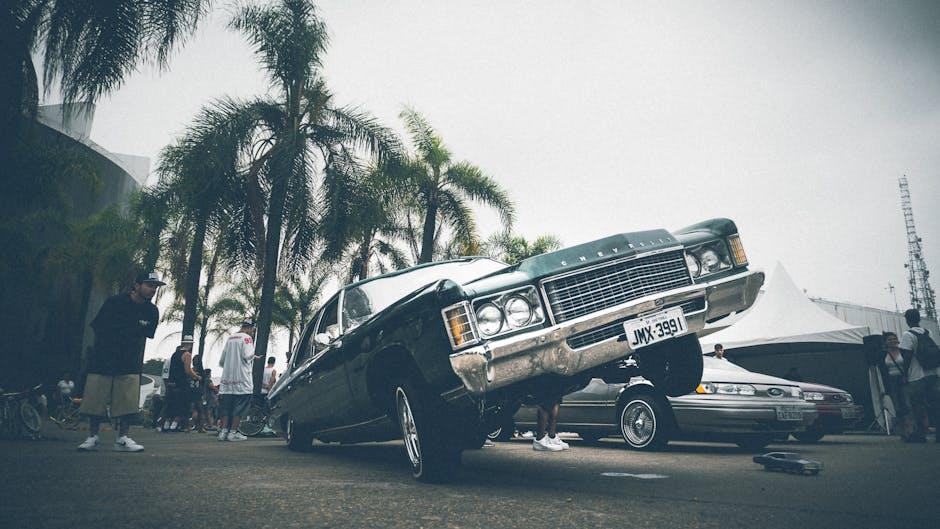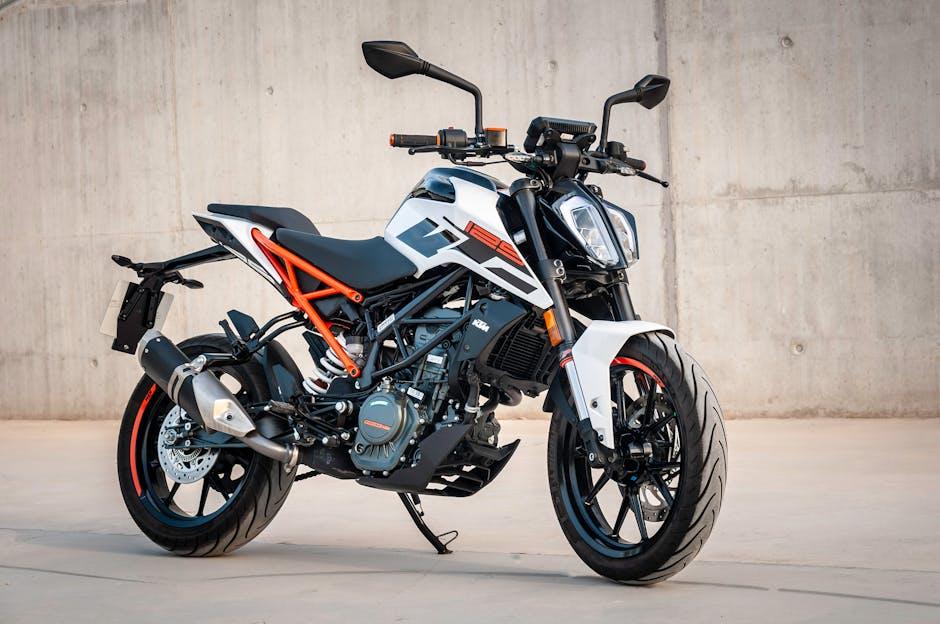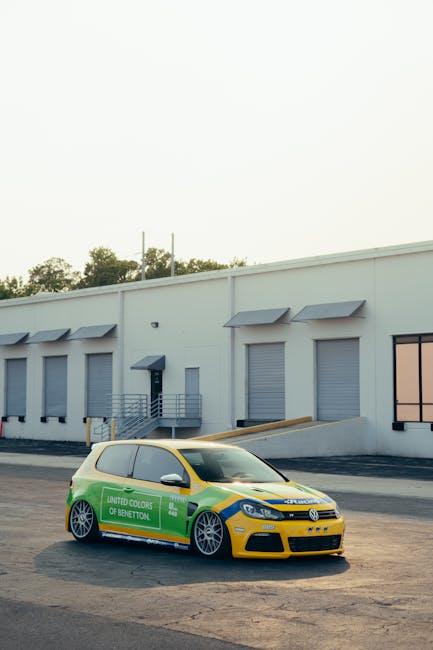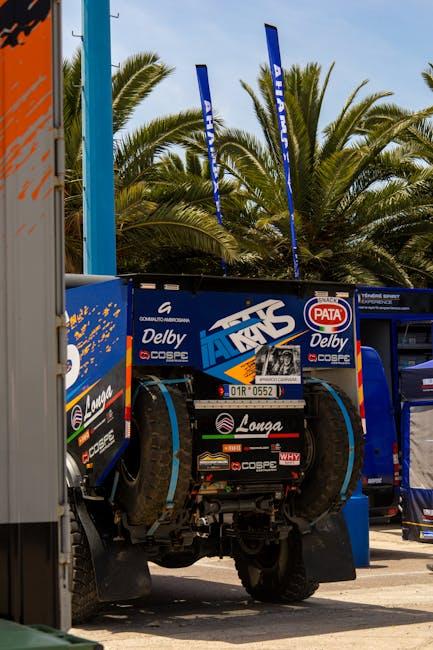Your car’s suspension is the unsung hero of every smooth ride, silently absorbing bumps and keeping you connected to the road. But like any crucial component, it doesn’t last forever. Knowing when to upgrade your suspension can mean the difference between a comfortable journey and a bumpy ordeal. Whether you’re a daily commuter, a weekend adventurer, or a driving enthusiast, understanding the signs and timing of a suspension upgrade is key to maintaining safety, performance, and enjoyment behind the wheel. In this article, we’ll explore the telltale signals that indicate it’s time to give your suspension a well-deserved upgrade.
Table of Contents
- Recognizing the Signs of Suspension Wear and Tear
- Understanding the Impact of Driving Conditions on Suspension Health
- Evaluating the Performance of Your Current Suspension System
- Choosing the Right Suspension Upgrade for Your Vehicle Type
- Balancing Cost and Benefits When Considering Suspension Replacement
- Preparing for a Suspension Upgrade: What You Need to Know
- Q&A
- Insights and Conclusions

Recognizing the Signs of Suspension Wear and Tear
Suspension systems silently endure the stresses of every journey, but they eventually reveal their wear through subtle yet unmistakable signs. One of the most common indicators is a noticeable decrease in ride comfort. If your vehicle starts to feel bumpy over small potholes or harsh speed bumps, it’s a clear signal that the shocks or struts might be losing their damping ability. Another red flag is uneven tire wear, often caused by misaligned or weakened suspension components that fail to maintain consistent contact between tires and the road.
Pay attention to these warning symptoms, which often manifest together:
- Excessive bouncing: After stopping, the car continues to bounce before settling.
- Steering instability: Difficulty maintaining control, especially around corners.
- Unusual noises: Clunks or squeaks during driving, often signaling loose parts.
- Vehicle sagging: One side of the car sits lower than the other.
| Symptom | Cause | Impact |
|---|---|---|
| Excessive Bounce | Worn Shock Absorbers | Reduced Comfort & Control |
| Uneven Tire Wear | Suspension Misalignment | Premature Tire Replacement |
| Steering Difficulty | Damaged Components | Safety Hazards |

Understanding the Impact of Driving Conditions on Suspension Health
Harsh driving environments can accelerate suspension wear, often catching drivers off guard. Rough terrains, pothole-ridden urban roads, and constant stop-and-go traffic exert a lot of stress on your suspension components. Over time, this stress leads to reduced ride comfort, compromised handling, and can even cause uneven tire wear. Recognizing how different conditions affect suspension health allows you to anticipate necessary upgrades before problems escalate.
Consider the common factors that take a toll on your suspension:
- Road Surface Quality: Gravel roads and uneven pavements increase shock absorber fatigue.
- Load Weight: Carrying heavy cargo frequently strains springs and shocks.
- Driving Style: Aggressive cornering and frequent braking amplify component wear.
- Weather Conditions: Extreme temperatures can degrade suspension bushings and lubricants.
| Condition | Common Suspension Impact |
|---|---|
| Off-Road | Increased shocks and struts damage |
| City Traffic | Premature spring wear |
| Heavy Loads | Sagging and decreased responsiveness |
| Cold Climate | Bushing and seal brittleness |

Evaluating the Performance of Your Current Suspension System
To determine if your suspension system is still up to par, start by listening to your vehicle as it navigates different road conditions. Unusual noises like clunks, squeaks, or rattles often signal worn-out components. Pay attention to how your car responds to bumps and rough terrain—excessive bouncing or a harsh, jarring ride can indicate dampers losing effectiveness. Additionally, consider whether your steering feels loose or imprecise, which can be a subtle sign that bushings or ball joints are nearing the end of their lifespan.
Another practical step is to perform a visual inspection or consult a professional for a thorough check. Look for:
- Leaking shocks or struts, which often manifest as oily residues near the suspension.
- Uneven tire wear patterns, a common indicator that alignment is off or suspension parts are damaged.
- Corroded or cracked springs that could reduce your vehicle’s ability to absorb impacts.
| Symptom | Likely Cause | Recommended Check |
|---|---|---|
| Vehicle sways during turns | Worn sway bar links or bushings | Inspect suspension joints and mounts |
| Bumpy, harsh ride | Damaged shock absorbers | Test shock absorber rebound |
| Uneven tire wear | Misalignment or failing components | Check wheel alignment and suspension parts |

Choosing the Right Suspension Upgrade for Your Vehicle Type
Not all suspension upgrades are created equal, and the best choice largely depends on the type of vehicle you drive. For instance, compact cars often benefit from lighter, more responsive springs and shock absorbers that improve handling without sacrificing ride comfort. In contrast, SUVs and trucks typically need beefier, heavy-duty components designed to support additional weight and enhance off-road performance. Understanding the typical usage of your vehicle will steer you towards upgrades that balance durability, control, and comfort.
Here’s a quick guide to common vehicle types and the suspension upgrades that best fit their needs:
- Sports Cars: Performance coilovers or adjustable shocks prioritize agility and road feedback.
- Luxury Sedans: Air suspension systems offer a smooth ride with customizable stiffness.
- Off-Road Vehicles: Lift kits and heavy-duty shocks provide ground clearance and shock absorption.
- Daily Commuters: Budget-friendly struts and springs to enhance stability without large modifications.
| Vehicle Type | Recommended Suspension Upgrade | Key Benefits |
|---|---|---|
| Compact Car | Performance Springs & Shocks | Improved Handling & Comfort |
| SUV/Truck | Heavy-Duty Lift Kits | Enhanced Load Capacity & Off-road Ability |
| Luxury Sedan | Air Suspension | Customizable Ride Quality |
| Sports Car | Coilover Kits | Better Road Feedback & Control |

Balancing Cost and Benefits When Considering Suspension Replacement
Investing in a suspension replacement is more than just a matter of price—it’s about weighing the long-term benefits against immediate costs. While quality components and professional installation may seem costly upfront, the payoff often comes in the form of enhanced safety, improved handling, and reduced wear on other vehicle parts. Before taking the plunge, consider factors like your daily driving environment, vehicle age, and typical load; these variables can influence whether a budget-friendly fix or a premium upgrade makes the most sense.
To help make an informed decision, keep the following considerations in mind:
- Durability: Higher-quality suspensions usually last longer, reducing frequency and expense of future repairs.
- Ride Comfort: Premium systems help smooth out rough roads, improving overall driving experience.
- Vehicle Compatibility: Some suspensions optimize performance for specific models or uses, such as off-road or sport driving.
| Aspect | Low-Cost Replacement | Premium Upgrade |
|---|---|---|
| Initial Cost | $ | $$$ |
| Longevity | Moderate | High |
| Performance | Basic | Enhanced |
| Maintenance | Frequent | Minimal |

Preparing for a Suspension Upgrade: What You Need to Know
Before diving into a suspension upgrade, it’s crucial to assess your vehicle’s current setup and driving habits. Upgrading isn’t just about swapping parts; it’s a strategic decision that requires understanding your needs. Consider if you frequently drive on uneven terrain, haul heavy loads, or desire better handling and ride comfort. These factors will dictate not only the type of suspension you choose but also the necessary supporting modifications, such as stronger bushings or upgraded shock absorbers.
To make the process smoother, gather important information and tools upfront:
- Vehicle Make and Model: Compatibility is key for performance and safety.
- Current Suspension Condition: Identify worn components that might need replacement.
- Budget Range: Helps balance quality with cost-effectiveness.
- Professional vs. DIY: Decide if you want expert installation or plan to do it yourself.
| Suspension Type | Ideal Use | Typical Cost Range |
|---|---|---|
| Coilover | Performance & Handling | $1,000 – $3,000 |
| Air Suspension | Comfort & Adjustability | $2,500 – $5,000 |
| Leaf Springs | Heavy Loads & Trucks | $200 – $700 |
Q&A
Q: Why should I consider upgrading my car’s suspension?
A: Upgrading your suspension can dramatically improve your vehicle’s handling, comfort, and safety. It’s especially worthwhile if you notice poor ride quality, excessive bouncing, or if you’ve installed performance tires and want your car to respond better on the road.
Q: How do I know if my suspension needs an upgrade or just a repair?
A: If your suspension parts are worn out or damaged, a repair or replacement is necessary. However, if your suspension is functional but you’re seeking enhanced performance, stability on rough roads, or a customized ride height, that’s when an upgrade is the smarter choice.
Q: Are there specific signs that indicate it’s time for a suspension upgrade?
A: Yes, signs include frequent bottoming out over bumps, excessive body roll in corners, uneven tire wear, a nose-dive during braking, or if your car feels floaty or loose at higher speeds. These symptoms suggest your current suspension may be underperforming.
Q: Will upgrading my suspension affect my car’s fuel efficiency?
A: It can, depending on the type of upgrade. Performance suspensions might slightly reduce fuel economy due to stiffer setups or added weight, but many modern suspension upgrades are designed to balance performance and efficiency.
Q: Can upgrading suspension improve safety?
A: Absolutely. A well-tuned suspension enhances vehicle control and braking efficiency, reducing stopping distances and improving responsiveness, which can be crucial in emergency maneuvers.
Q: When is the best time to upgrade my suspension—seasonally or mileage-wise?
A: While there’s no strict timeline, many drivers consider upgrades after 50,000 to 70,000 miles when shocks and struts commonly begin to wear down. Some also upgrade seasonally, especially before winter, to ensure optimal control on slippery roads.
Q: Should I upgrade the entire suspension system or just certain components?
A: It depends on your goals and budget. For noticeable improvements, upgrading key components like shocks, struts, and springs is effective. For a complete transformation, consider a full system upgrade including sway bars and bushings.
Q: Is upgrading suspension suitable for all car types?
A: Most vehicles can benefit from suspension upgrades, but the type of upgrade varies by car model, usage, and driving style. Off-road vehicles, sports cars, and daily commuters each have different suspension needs.
Q: How do I choose the right suspension upgrade for my car?
A: Start by assessing your driving habits and goals. Are you after comfort, performance, off-road capability, or aesthetics? Consulting a suspension specialist or doing thorough research can help narrow down options that fit your vehicle and budget.
Q: Can I install upgraded suspension parts myself, or should I seek professional help?
A: While some DIY enthusiasts may install suspension components, it typically requires specialized tools and expertise to ensure safety and proper alignment. Professional installation is recommended to avoid costly mistakes and ensure optimal performance.
Insights and Conclusions
Knowing when to upgrade your car’s suspension is less about a fixed timeline and more about listening to the subtle cues your vehicle gives you. From the telltale signs of uneven tire wear to that unmistakable feeling of a harder ride or poor handling, these signals are your car’s way of saying it’s time for a change. Investing in a suspension upgrade not only revitalizes your driving experience but also enhances safety and extends the life of your vehicle. So, stay attuned to the road, your car’s behavior, and your own comfort—because the best moment to upgrade is when your journey demands it.

